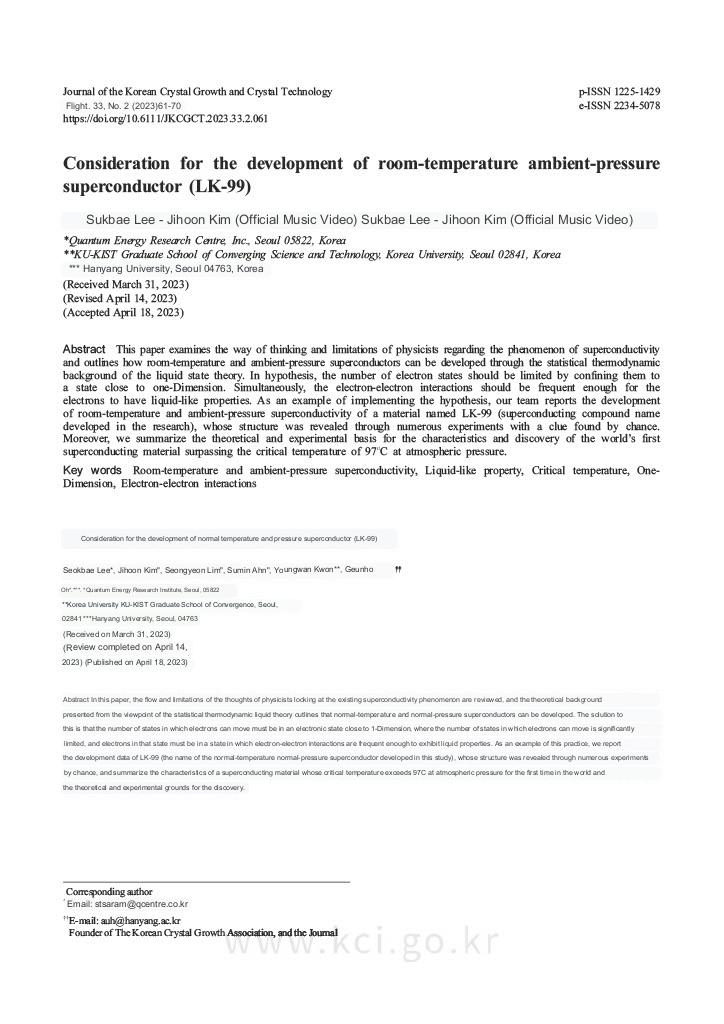So in all this excitement, what's the catch? It all kinda feels too good to be true.
The video posted of the superconductor "levitating" over a magnet is too ambiguous to be evidence of anything. The sample only partially levitated, with one side of it staying down on the magnet. It didn't keep stable in the position it was placed in, instead it wobbled around. And at one point it even seemed to snap onto the magnet after the scientist gently nudged it a couple centimeters off the magnet's center.
Other than that, from what I've heard from physicists who read the paper, the experiment lacked some tell tale measurements that are usually used to demonstrate superconductivity, and none of the existing data points solely to superconductivity. I've also seen suspicion of possible user error in the equipment used to measure resistivity.
The consensus among people who doubt superconductivity think it's probably just a diamagnetic material. When a magnetic field is applied to a diamagnet, it induces another magnetic field in the opposite direction. An example of this is copper. If you drop a magnet down a copper tube, it will fall slowly as the copper generates its own magnetic field acting in the opposite direction of the magnet's movement.
With very highly diamagnetic materials like Pyrolitic Carbon, it's possible to float them stably above a magnet in a way that, at first glance, is identical to the Meissner effect in superconductors. It's not anywhere near as stable as a superconductor levitating, but it won't instantly flip and snap to the magnet like another ordinary magnet would. A lot of materials you wouldn't necessarily think of are actually slightly diamagnetic, including water. With a strong enough magnetic field, you could even levitate an animal, this has been accomplished with a small frog.
So those are the catches for why people tend to think this won't pan out.
On the other hand, it could very well be that the sample was just very impure and non-uniform. In that case, it's possible superconductive levitation would look just like it did in the video. That's what the scientists behind the paper themselves seem to be arguing. But even if it is just a diamagnet, it looks like it would have to be an extremely strong one, maybe even the strongest one known. There might be something strange here even if it's not a superconductor.
So to find out one way or the other, we're gonna have to wait for someone to make a new sample and do better tests. I personally doubt it's going to work out, but I do believe that the scientists involved are at least being sincere and haven't fabricated anything.
Is this the same paper that has been going around science Twitter for weeks now, or is it a new one?
From what I've been reading this appears to be the original paper the team wrote, which just passed peer review and was published yesterday. Apparently the other paper was rushed out over drama about credit or fears that the peer-review process may leak the results?
those were on arxiv and were already in English? this is a machine translation.




